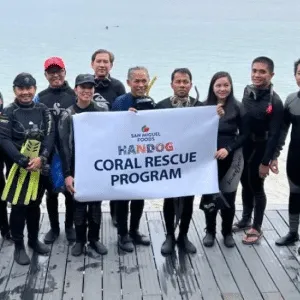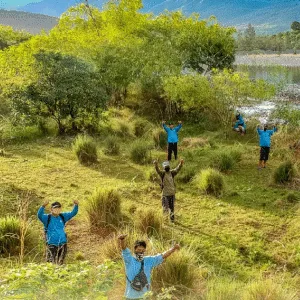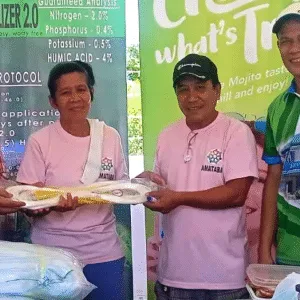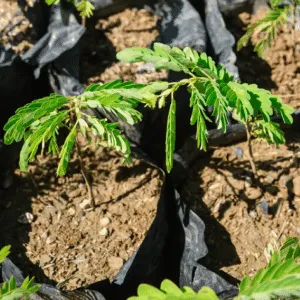Biodiversity and Ecosystems
At San Miguel Corporation, we recognize biodiversity as fundamental to the resilience of ecosystems, communities, and our own long-term operations. Across our businesses, we are committed to protecting the natural systems that support life—from forests, rivers, and coastal habitats to the species and ecological processes that sustain them. This includes both tangible natural resources—such as timber, water, and agricultural land—and the intangible ecosystem services they provide, including air and water purification, flood protection, carbon storage, crop pollination, and habitats for wildlife.
In 2023, San Miguel Aerocity Inc. (SMAI) started to develop its Biodiversity Offset Program (BOP) to ensure that the construction and development of the New Manila International Airport (NMIA) achieves both No Net Loss (NNL) and Biodiversity Net Gain (BNG) in identified critical habitats. Modeled on sciencebased conservation practices, BOP is a pioneering initiative designed to prevent and reverse the degradation of terrestrial and marine ecosystems in Manila Bay—recognized as a high conservation value area and designated as a RAMSAR site.
NMIA is poised to strengthen national connectivity and spur inclusive economic growth. Beyond job creation, NMIA is envisioned to serve as a regional hub for innovation, to be supported by industries that will emerge alongside the airport city. It is set to become a key driver of economic and trade activity in Central Luzon. Aligned with our vision for sustainable, aviation-led regional development, the BOP applies a science-based approach to safeguard and restore the natural habitats of flora and fauna throughout the construction and future operations of NMIA.
To mitigate habitat disruption during construction, we began by scientifically recreating intertidal mudflats used by migratory birds, relocating them to a more suitable site. This proactive measure ensured that feeding patterns, foraging behavior, and social interactions among bird species would not only be maintained but potentially improved. In collaboration with international ornithologists and bird researchers, we conducted bird tagging to monitor behavioral patterns and usage of the newly established mud flats. These insights are helping us identify additional viable habitats along Manila Bay to support long-term species survival. By 2024, the number of bird species visiting the area increased by 55.7%. Building on this early success, we expanded the pilot site by an additional 60 hectares across the provinces of Bulacan and Pampanga. Over the long-term, SMAI aims to develop between 400 and 800 hectares of restored intertidal mudflats.
In 2024, we recorded an average year-over-year increase of 3.9% in operational sites that are owned, leased, or managed near protected areas or zones of high biodiversity value. This rise reflects the inclusion of new project sites, notably SMAI’s NMIA and Biakna- Bato National Park—located approximately five kilometers from our Eagle cement plant in Bulacan province. Biak-na-Bato is a nationally significant protected area, comprising a network of caves, rivers, and trails across the municipalities of San Miguel, San Ildefonso, and Doña Remedios Trinidad. The park spans 2,117 hectares and plays a critical role in supporting regional biodiversity, freshwater systems, and local ecological balance.


In 2024, the inclusion of Biakna- Bato National Park expanded the adjacent habitats we help conserve and protect by an additional 5 hectares, bringing the total to nearly 1,934 hectares. The park is home to four species of flora and fauna classified as ‘threatened’ under the IUCN Red List. These include two endangered tree species— Narra (Pterocarpus indicus) and Mahogany (Swietenia macrophylla)—as well as the vulnerable Is-is (Ficus ulmifolia). The park also supports the Malayan freshwater turtle (Cuora amboinensis amboinensis), a semi-aquatic species found in standing freshwater bodies across Southeast Asia which is listed as ‘vulnerable.’ With these additions, the number of national conservation list species found in habitats adjacent to our operations rose to 33, further underscoring the importance of continued biodiversity protection in the areas where we operate.
We recognize that nature underpins not only the health of the planet, but also the well-being of people and the sustainability of our business. That is why we place a high value on natural ecosystems and the services they provide—across every aspect of our operations. We are a strong supporter of the recently issued RA 11995, “The Philippine Ecosystem and Natural Capital Accounting System (PENCAS) Act of 2024”, which aims to promote sustainable development by recognizing and valuing the country's natural assets.
From mudflats to mountain forests, we are restoring ecosystems, protecting threatened species, and making biodiversity part of how we do business.
From leading reforestation and mangrove restoration efforts through initiatives like Project 747 and Ridge to Reef, to supporting government-led programs such as the Mining Forest Program, NGP for Enrichment, Fish and Fishermen Sanctuary, we continue to invest in the preservation and restoration of the country’s natural capital. Our programs and projects continue to support the conservation of natural resource—whether through water (Water for All), ecosystem rehabilitation (River Clean-up), biodiversity conservation (BOP, Project 747), or social inclusion (Better World). From local to global efforts, we at San Miguel Corporation uphold our core value of malasakit as a guiding principle in everything we do. In recognition of this commitment, San Miguel Corporation was honored under the Prosperity and Planet categories at the 4th SDG Awards by the UN Global Compact Network Philippines (GCNP) in 2024.
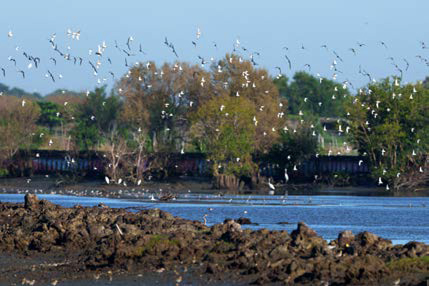
Manila Bay is notable not just for its beautiful sunsets. As part of what is known globally as the East-Asian-Australasian Flyway (EAAF), it is vital to migratory birds traveling year-round from Russia and Alaska to Australia, New Zealand, China, Japan, Korea, Southeast Asia, and the rest of the Western Pacific.
Home to over 50 million migratory waterbirds, including a number of globally threatened species, the flyway has in recent decades been under constant risk due to continued deforestation and rapid development. Along the Manila Bay, where major commercial developments and settlements have mushroomed over the decades, onceubiquitous mudflats where migratory birds roost have all but disappeared.
San Miguel Corporation has reinforced its commitment to help protect this migratory path amid the development of the country’s largest international gateway, the New Manila International Airport.
The project, dubbed Saribuhay sa Dampalit, is a firstof- its kind biodiversity offset program championed by San Miguel Aerocity Inc. (SMAI) that involves the creation of intertidal mudflats - initially in Barangay Pamarawan, Malolos, Bulacan. It is aimed at achieving SMAI’s goal of Biodiversity Net Gain and No Net Loss of Natural Habitats as it builds the NMIA.

Launched in February 2024, the site has already become an essential stopover for waterbirds along the EAAF.
“We want to create between 400 to 800 hectares of biodiversity offset areas. We are in the process of assessing additional sites to determine their feasibility for biodiversity offset, making sure that the feasibility process is carried out carefully and accurately through technical studies and consultations with experts, community members, local government units,” said SMC Chairman and CEO Ramon S. Ang.
The project is a first-of-its kind biodiversity offset program championed by San Miguel Aerocity Inc. (SMAI) that involves the creation of intertidal mudflats.
A Place to land

“We are committed to allocating the needed resources to fully implement this initiative and ensure that all the biodiversity offset sites are completed and efficiently managed,” he added.
The offset site was developed as a result of comprehensive research, which included bird tagging under the watch of the Department of Environment and Natural Resources (DENR). A Wildlife Hazard Assessment was also undertaken, and a Management Plan put in place.
These efforts are particularly significant since 14 of the migratory bird species said to be visiting Manila Bay are either included in the International Union for Conservation of Nature (IUCN) Red List of endangered, vulnerable or near-threatened birds, or classified by the DENR as “species of concern.”
Among bird species that have been seen in the area during migration season are: black-faced spoonbill, Nordmann’s greenshank, great knot, far-eastern curlew, Asian dowitcher, broad-billed sandpiper, rednecked stint, long-toed stint, Kentish plover, lesser sand plover, and the great white egret.
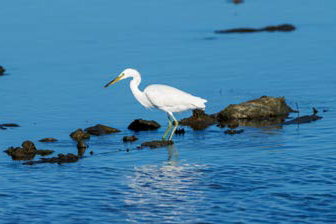
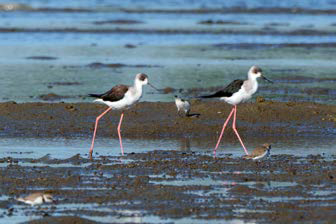
International avian experts have played a key role in this initiative, and a specialized bird-watching team has been established to facilitate the activities associated with the project.
Meanwhile, to help ensure flight safety at the NMIA, SMAI is working with ornithologists, aviation experts, and the Civil Aviation Authority of the Philippines’ (CAAP) wildlife hazard consultants to determine the offset sites’ safe distances from the airport.
“Nang dahil po sa project na ito, nalinawan kami na kailangang pangalagaan ang mga ibon at kalikasan (This project enlightened us on the need to protect wildlife and the environment),” said Miguel Faustino, a resident of Bulacan, who currently leads the community workers at Saribuhay sa Dampalit.
The Biodiversity Offset Program employs locals who create and maintain the mudflats using silts from SMC’s river cleanup initiative.
Through this, SMAI provides valuable employment opportunities for project-affected persons (PAPs) and skilled workers from nearby communities. The effort also contributes to environmental management by deepening waterways and increasing their capacity to support flood mitigation and overall ecosystem health.
Following the launch of the 47-hectare BOP pilot Saribuhay sa Dampalit site in Pamarawan, Bulacan SMAI has continued work to create mudflats in the Northern Manila Bay Areas.
The biodiversity offset project is but one example of SMC working closely with experts and stakeholders to find win-win solutions that benefit communities, the environment, the project, and the wider public. It is something we are proud of and committed to seeing through as part of wide-ranging efforts to ensure that development of the Bulacan airport will be done right and sustainably.
As a strategic approach to protecting and offsetting the natural habitats of flora and fauna that massive developments have impacted, SMAI aims to set a new standard for infrastructure projects in the Philippines.
In November 2024, Stewardship Asia Centre hailed the Biodiversity Offset Program among the honorees of its Steward Leadership 25 (SL25) Award.
SMC Chairman and CEO Ramon S. Ang has committed to ensure these sites remain sustainable during and beyond the concession period.
